Potrebujeme váš súhlas na využitie jednotlivých dát, aby sa vám okrem iného mohli ukazovať informácie týkajúce sa vašich záujmov. Súhlas udelíte kliknutím na tlačidlo „OK“.
ASTM D4294-10
Standard Test Method for Sulfur in Petroleum and Petroleum Products by Energy Dispersive X-ray Fluorescence Spectrometry
Automaticky preložený názov:
Štandardná skúšobná metóda pre sírou v ropy a ropných produktov zo strany Energetického disperzné RTG fluorescenčnej spektrometrie
NORMA vydaná dňa 15.2.2010
Informácie o norme:
Označenie normy: ASTM D4294-10
Poznámka: NEPLATNÁ
Dátum vydania normy: 15.2.2010
Kód tovaru: NS-26723
Počet strán: 9
Približná hmotnosť: 27 g (0.06 libier)
Krajina: Americká technická norma
Kategória: Technické normy ASTM
Kategórie - podobné normy:
Anotácia textu normy ASTM D4294-10 :
Keywords:
analysis, diesel, gasoline, jet fuel, kerosine, petroleum, spectrometry, sulfur, X-ray, XRF (X-ray fluorescence)--petroleum products, Energy-dispersive spectroscopy (EDS), Fuel oils, Fuel sulfur, Gasoline--nonleaded, Naphtha and naphtha derivatives, Wavelength dispersive X-ray fluorescence, ICS Number Code 75.080 (Petroleum products in general)
Doplňujúce informácie
| Significance and Use | ||||||||||||
|
This test method provides rapid and precise measurement of total sulfur in petroleum and petroleum products with a minimum of sample preparation. A typical analysis time is 1 to 5 min per sample. The quality of many petroleum products is related to the amount of sulfur present. Knowledge of sulfur concentration is necessary for processing purposes. There are also regulations promulgated in federal, state, and local agencies that restrict the amount of sulfur present in some fuels. This test method provides a means of determining whether the sulfur content of petroleum or a petroleum product meets specification or regulatory limits. When this test method is applied to petroleum materials with matrices significantly different from the calibration materials specified in 9.1, the cautions and recommendations in Section 5 should be observed when interpreting results. |
||||||||||||
| 1. Scope | ||||||||||||
|
1.1 This test method covers the determination of total sulfur in petroleum and petroleum products that are single-phase and either liquid at ambient conditions, liquefiable with moderate heat, or soluble in hydrocarbon solvents. These materials can include diesel fuel, jet fuel, kerosine, other distillate oil, naphtha, residual oil, lubricating base oil, hydraulic oil, crude oil, unleaded gasoline, gasohol, biodiesel (see Note 2), and similar petroleum products. Note 1—Oxygenated fuels with ethanol or methanol contents exceeding the limits given in Table 1 can be dealt with using this test method, but the precision and bias statements do not apply (see Appendix X3). Note 2—For samples with high oxygen contents (>3 wt %) sample dilution as described in 1.3 or matrix matching must be performed to assure accurate results. 1.2 Interlaboratory studies on precision revealed the scope to be 17 mg/kg to 4.6 mass %. An estimate of this test method’s pooled limit of quantitation (PLOQ) is 16.0 mg/kg as calculated by the procedures in Practice D6259. However, because instrumentation covered by this test method can vary in sensitivity, the applicability of the test method at sulfur concentrations below approximately 20 mg/kg must be determined on an individual basis. An estimate of the limit of detection is three times the reproducibility standard deviation, and an estimate of the limit of quantitation is ten times the reproducibility standard deviation. 1.3 Samples containing more than 4.6 mass % sulfur can be diluted to bring the sulfur concentration of the diluted material within the scope of this test method. Samples that are diluted can have higher errors than indicated in Section 16 than non-diluted samples. 1.4 Volatile samples (such as high vapor pressure gasolines or light hydrocarbons) may not meet the stated precision because of selective loss of light materials during the analysis. 1.5 A fundamental assumption in this test method is that the standard and sample matrices are well matched, or that the matrix differences are accounted for (see 5.2). Matrix mismatch can be caused by C/H ratio differences between samples and standards (see Section 5) or by the presence of other heteroatoms. 1.6 The values stated in SI units are to be regarded as standard. No other units of measurement are included in this standard. 1.7 This standard does not purport to address all of the safety concerns, if any, associated with its use. It is the responsibility of the user of this standard to establish appropriate safety and health practices and determine the applicability of regulatory limitations prior to use. |
||||||||||||
| 2. Referenced Documents | ||||||||||||
|
Podobné normy:
Historická
1.5.2011
Historická
1.1.2011
Historická
1.5.2010
Historická
1.12.2012
Historická
1.10.2009
Historická
1.5.2010


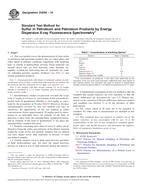
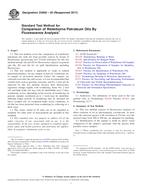 ASTM D3650-93(2011)..
ASTM D3650-93(2011)..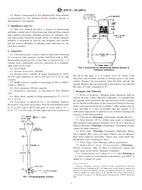 ASTM D3712-05(2011)..
ASTM D3712-05(2011)..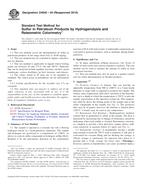 ASTM D4045-04(2010)..
ASTM D4045-04(2010)..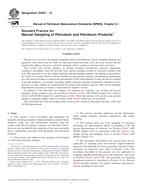 ASTM D4057-12
ASTM D4057-12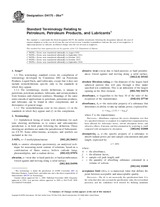 ASTM D4175-09ae5..
ASTM D4175-09ae5.. ASTM D4177-95(2010)..
ASTM D4177-95(2010)..
 Cookies
Cookies
